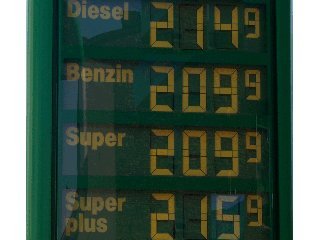|
|
Save energy 1

Please, do not be startled, but these could be tomorrow's fuel prices. In any case, they become cheaper only for a short time, to tone down harsh price increases. Therefore, a fuel saving driving
manner especially pays off in the long run.
CO2 emissions from vehicles with approx. 1 liter displacement
... from 100 to 120 km/h: duplication
... motr than 120 km/h:
multiplication |
How does such a way of driving look like? Let us start with the highway. The fuel consumption on the highway depends clearly on the driving speed and the number and intensity of the acceleration
occurrences. It is important that this does not happen linearly. Driving fast the fuel consumption rises disproportionate. An example from the shipping industry is even more illuminating. If a large
container ship with 20 instead of 23.5 knots is traveling, it saves a third of its energy.
Further tips for the saving of fuel are more difficult. You may search for the slipstream of another vehicle, preferably a truck. However, for the slipstream to be effective you would have to keep
such a long distance to the truck in front of you that it might very well cause conflicts with the truck behind you. And of course we do not want to get in trouble with truck drivers in our back!
Another possibility for saving fuel is to change into idle running at highway slopes, against the advice of former driving schools. As long as you do not switch off the engine, and you are traveling just
with your vehicle, it does not affect the brake system. Unfortunately, there are not so many highway-slopes where the vehicle holds its speed in idle running.
| Allow the car to roll on the country road |
On the country road the rolling in idle running is more promising. If you know that you are approaching a speed limit, especially if you take this road regularly, you can make use of the idle running
to take the car down in speed to the new limit. Using the idle running you reach (after some practice) easily the suitable speed. However, you should be aware of vehicles behind you that do not
always accept such a conformist way of driving.
| Cross the city in the highest gear |
Idle running is most effective in the city, as you drive, in principle, from traffic light to traffic light. Often you already know them and how they are regulated. If you are still too fast in spite of the idle
running, you can also engage the engine brake (by using smaller gears) because the fuel consumption is zero. In any case, make use of your rear-view mirror to observe traffic behind you, making
sure that you do not hinder them, for example because there is a turn to the right immediately before the traffic light.
| Low revs and gear leap over |
You might not believe it, but also the acceleration leaves room for saving fuel. It is important to reach relatively quickly the highest gear which you should maintain, also in the city. Do not worry
about your engine; it can stand all revs from idle running upwards. Pay attention to the accelerator pedal, so that you do not become too fast. It is slightly more difficult to leap over gears while
accelerating. As a starting point, you might take the fourth gear for the five-speed gearbox. You should leave the third gear until at most 2500 1/min and then directly change into the fifth gear. You
should not use the accelerator pedal, because then you endanger the clutch and the whole savings effect is wasted. Once you let go the clutch, it makes sense to use the accelerator pedal. If you
manage this exercise without jerks, you may try leaving out the second gear, best of all at first during low traffic.
Pay attention in the following movie
on the consumption display! |
|
|